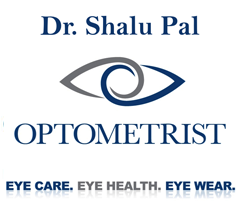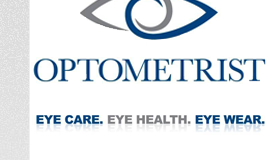Contents |
Computer Use and Dry Eye: Signs and Symptoms Linked
Introduction and Overview
For many years, people who use computers for several hours a day have been reporting an increase in symptoms (subjective discomfort, as reported by the patient experiencing them) and signs (objective findings observed by an eyecare practitioner) of dry eye disease. While the use of computers and dry eye symptoms is nothing new, a recent study (June, 2014) of Japanese office workers has shown the cause to be a decreased concentration of a substance called Mucin5AC in tears.
Mucins are a group of substances found in normal tears that act as protectors and lubricants on the surface of the eye.
Called the Osaka Study, data for this research was collected from 96 volunteers recruited from office workers in Japan. Participants were asked to rate their symptoms of dry eye and eyestrain. The length of computer use per day was categorized as short (less than 5 hours), intermediate (5 to 7 hours) or long (more than 7 hours).
Participants in the Osaka Study averaged a little over 8 hours of computer use in an average day; they were tested for signs of dry eye disease in clinical exams and were designated as definitely having dry eye disease, probable dry eye, or no dry eye at all.
Of course, it may be true that the very fact that these participants used their computers for eight hours a day may explain some of their eyestrain symptoms. However, dry eye disease has been associated with varying degrees of discomfort and reduced productivity and impairment, regardless of whether or not a computer is used at all.
Findings and Implications
Normal tears contain a balance of three main ingredients: first, there is a layer of mucins, which lubricate the surface and allow the tears to adhere to the eye. Most of the tear volume (about 90%) is made up of water with a low concentration of salt (normal saline); the top layer is formed by lipids, which can be thought of as a shield against evaporation.
Patients who complain about dry eye symptoms, whether they use computers or not, usually try one or more brands of over-the-counter (OTC) ocular lubricants. Some of these products consist of normal saline, which adds to the overall volume of tears. Others work by increasing either the mucins or the lipids. The problem is that most patients have no idea which component of their tears is causing their symptoms, so success with OTCs is random, at best. Effective treatment of dry eye disease depends on finding the underlying cause and correcting that.
One available treatment for dry eye disease is available by prescription, called Restasis. It is thought that Restasis increases tear production, at least partly by reducing underlying inflammation.
To add to the confusion, there are several ways for eyecare practitioners to test tear volume and quality. One commonly-used test for tear volume, the Schirmer’s test, uses absorbent paper strips that are placed in the lower eyelids and left for 5 minutes; a phenol red-thread test (Zone-Quick is one brand available) is much faster and probably more reliable because there is less irritation from the thread than from a paper strip. In either case, the length of paper or thread that is wetted by the tears is measured and the tears can be classified as adequate or inadequate. In addition, other tests measure the osmolarity of the tears (the amount of salinity) and the presence or absence of an adequate lipid layer.
According to the Osaka Study, computer users with definite dry eye disease had lower Mucin5AC concentrations in their tears, which corresponded with signs and symptoms of eyestrain and dry eye symptoms. This is the first time a definite link has been shown between computer use, dry eyes and a decrease in a specific component of the tears.
Computers and dry eye disease have long been linked, but it was not known exactly where or how. Dry eye disease can be caused by a shortage of secreted tears (low volume), quick evaporation off the eye surface, or an imbalance in the normal tear composition. Volume may be normal but evaporating too quickly, or the mucin layer may be out of balance with other components.
In most offices, computer workstations are not particularly ergonomic; that is, they aren’t set up well for the comfort of the user. Monitors are usually too high, causing the user to gaze straight ahead rather than slightly downwards, a more natural reading posture. Many computer users mistakenly think that they should be gazing either straight ahead or even slightly upwards, which can result in dry eye symptoms because it has been shown that the rate of blinking decreases by as much as one-third. Lower blink rate leads to increased tear evaporation, especially when combined with a straight gaze, which requires an eyelid that is more open and exposed to the air.
Above: These computer users have their monitor set much higher than recommended by most ergonomics experts; their eyes are gazing straight ahead. Straight-ahead gaze is associated with significantly decreased blinking and lower tear production, both of which can lead to dry eye symptoms.
Summary
There are many different causes of dry eye disease, its signs and its symptoms. Finding the specific underlying cause of the discomfort allows more specific and targeted treatments and increases the chances of effective relief.
The Osaka Study is just one of many recent research projects being conducted on dry eye disease and its causes. For the first time, a definite link has been found with one type of dry eye and a decrease in a specific tear component.
It is hoped that as more computer users switch to laptop-style computers, workers can establish a more natural posture and increase their back and shoulder comfort as well as decrease their dry eye symptoms. As monitors get larger, even PCs will get easier and more comfortable to use.
People who experience dry eye symptoms such as eyestrain, redness, itching, burning and blurred vision should see their eyecare practitioner for testing before heading to the store for a random-choice ocular lubricant. One important component of comfortable computer use is for the eyecare practitioner to be sure his or her patient is wearing the proper lens prescription and that it is appropriate for the distance from the eyes to the monitor.
More targeted treatment will result in better relief, and this is true whether one uses a computer all day long and into the night, or never uses one at all.







